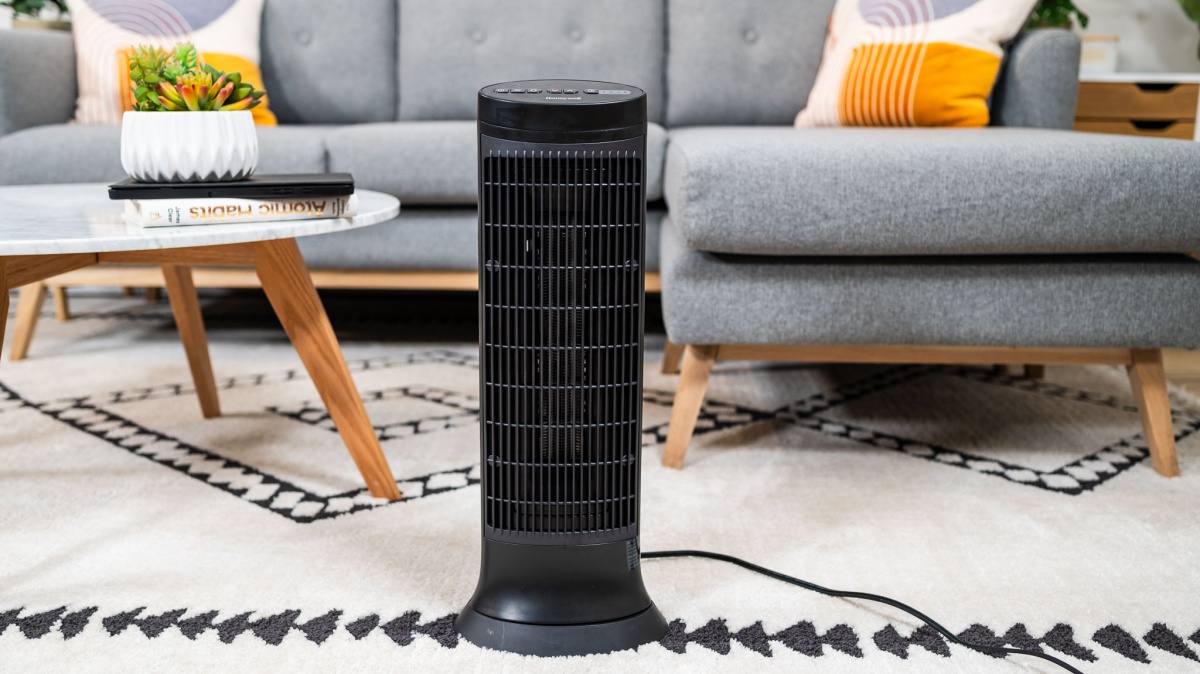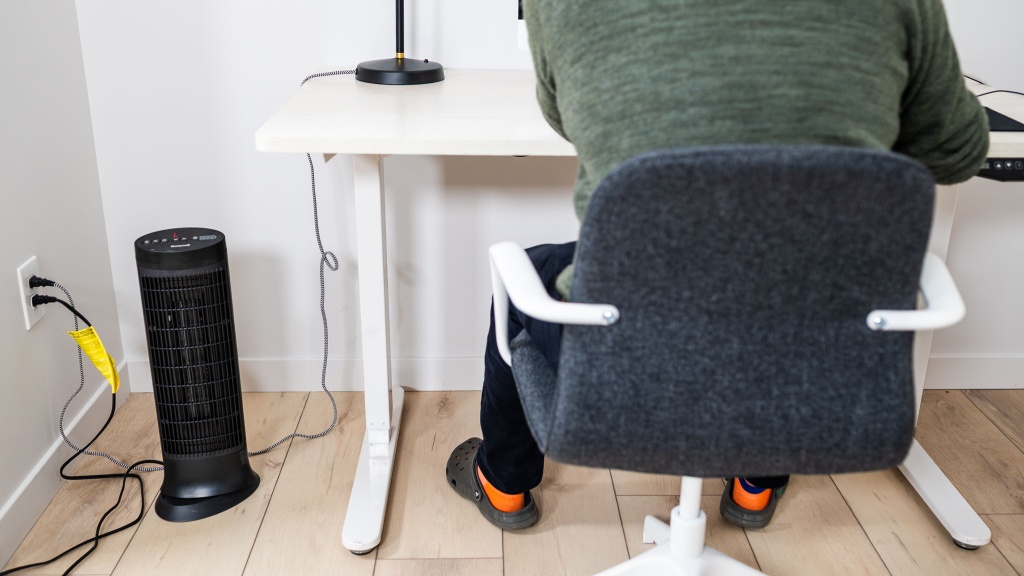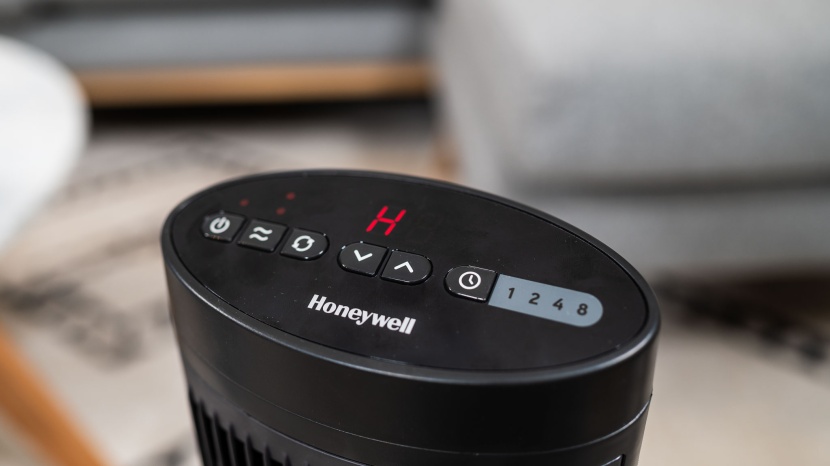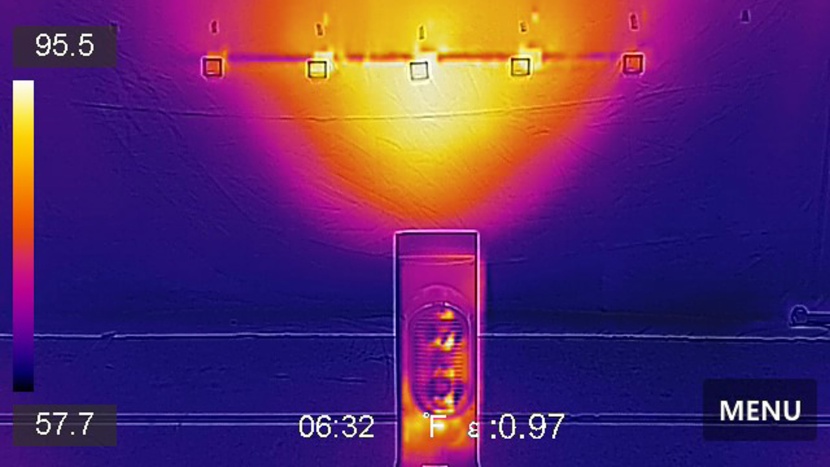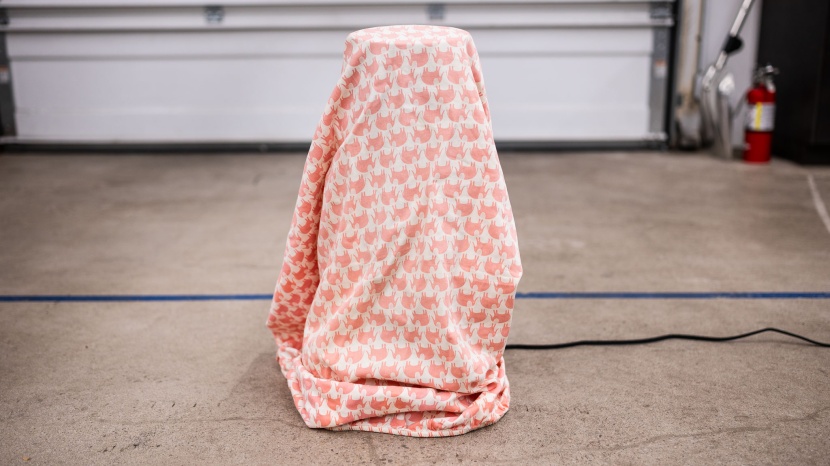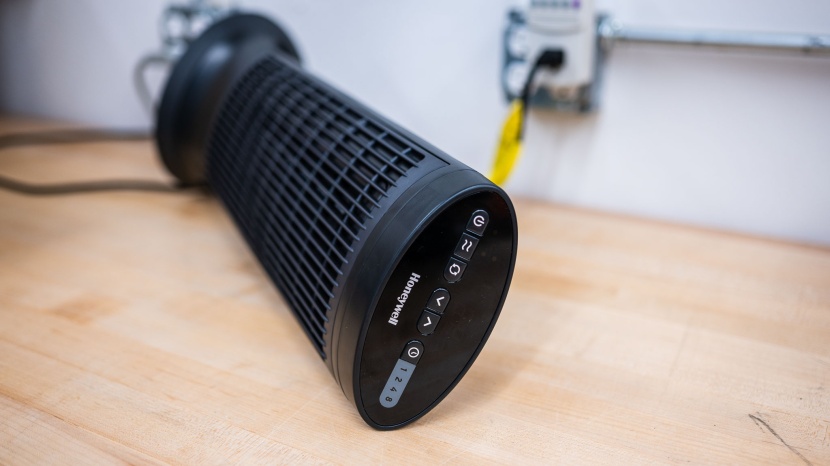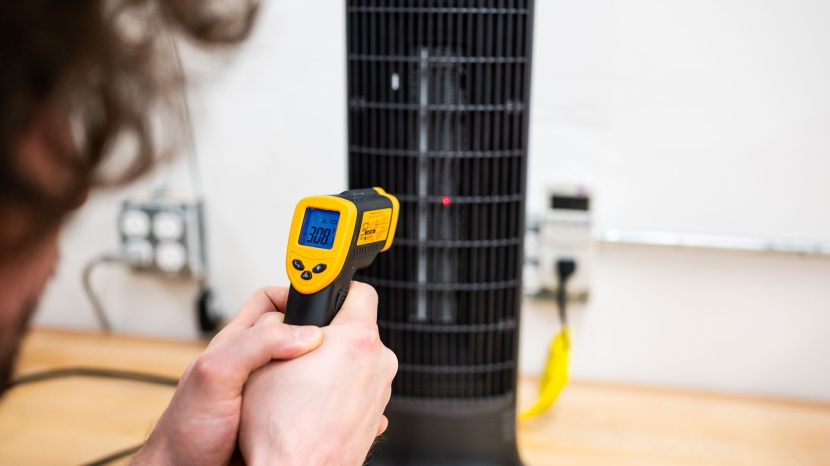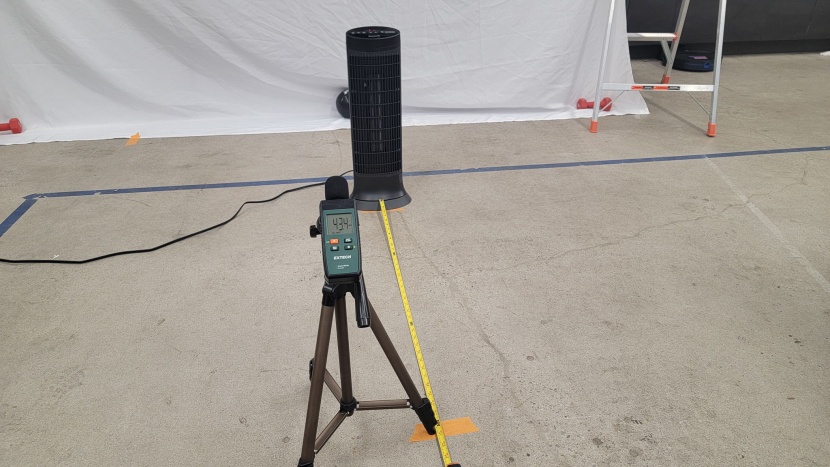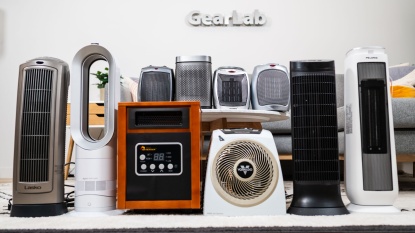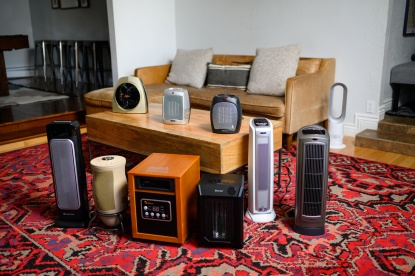
Our Verdict
Our Analysis and Test Results
This model roasted most of its rival space heaters. Read more below for an explanation of why.
Room Heating
A heater's average room performance can be affected by a multitude of factors, such as each manufacturer's heating element, power output, fan size, and fan speed. The Honeywell HCE322V earned a commendable score for this metric.
The Honeywell's mighty fan and variable fan speeds allowed it to place 3rd against its competitors. After an hour of this heater cranking away and directing its powerful heat in all directions rather than just in front, the Honeywell increased the average room temperature by 5.6 degrees Fahrenheit. We also noticed that its slightly lower power output seemed to provide slightly above-average results and ultimately had one of the strongest showings throughout the lineup.
With its powerful fan and oscillating mode turned on, the Honeywell heater does well heating a room from small to medium size and can even take the chill out of a larger space if necessary. Its simple digital display also allows for precision control of each environment without having to press buttons or turn a dial more than once, which simply added to our positive impression of this space heater.
Direct Heat
In our direct heat tests, the Honeywell came through like a fiery comet and destroyed most of the competition. The hot air spread is more than decent, and the middle sensor out of five rose by an astonishing 17.1 degrees, more than any other heater in our lineup.
With such a high and direct output, the Honeywell was overwhelmingly hot at times. Still, by turning down the mode and turning the oscillation on, we were able to arrive at a very comfortable temperature. After fine-tuning the unit and spending ample time just sitting in front of it and working, we also found that the Honeywell didn't scorch us with a hotspot like some of its other direct heat competitors, and its rectangular heating element provided better distribution as well.
In our safety tests, the Honeywell gave us so much confidence that we would feel okay about leaving it running overnight. Its tip-over protection shut the heater off immediately when it began to topple, and when we placed a sheet over the unit for our overheat test, the heater shut off in less than 10 seconds, while the grille registered only 150 degrees Fahrenheit. We would recommend the Honeywell to anyone with safety concerns or animals that tend to explore and topple items over.
Consistent Warmth
Features like oscillation multiple fan speeds, and heating element design can factor into consistant warmth. The Honeywell not only has an oscillation mode, but when the heater is changed to a lower setting, the fan speed also changes. Both of these features, combined with a digital temp display, meant that we could calibrate this particular space heater to surround us in a shroud of warmth.
When we had the Honeywell on high and close by in a smaller enclosed room, we noticed that it could be somewhat stifling at times before tweaking the heater for a perfect temp.
Sound
The Honeywell scored some of the lower marks in the sound department. We used a professional sound meter and listened for irritating or frustrating squeaks or grinds.
While all the heaters we tested are relatively quiet and most likely wouldn't disturb a child's sleep when turned off or on, the Honeywell registered our third-highest reading at 46.2 decibels. However, it had no annoying sounds and was quieter than comparable models in the highest setting. We recommend it to anyone who doesn't mind the standard droning of a small fan.
Should You Buy the Honeywell Digital Ceramic HCE322V?
This heater is an absolute homerun for anyone who needs some fiery heat quickly. It would do particularly well for someone needing to get those digits warm in a hurry. It has the capability to heat a room thoroughly, and its powerful fan, combined with oscillation mode, gives every crack and corner a blast of hot air. It's added list of safety features makes the Honeywell HCE322V a perfect set-it-and-forget-it heater.
What Other Space Heater Should You Consider?
If you run a yoga or massage studio, the quietest option in our lineup is the Dreo Atom One, which has comparable direct heating scores and a smaller footprint. If you need more consistent warmth, you might want to take a gander at the Vornado AVH10, which has similar safety features. For something that will beat out every other heater on a budget, the Amazon Basics Ceramic 1500W is sure to keep your wallet full.


